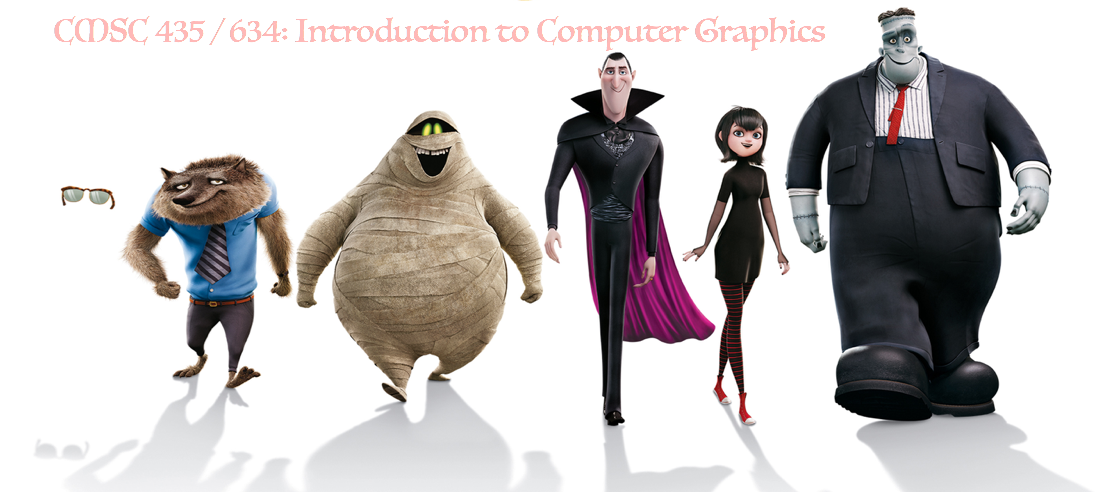Goals of the projects
Get hands-on experience with solving real-world problems in computer graphics using effective visual encoding and interaction. We are proud that Nielsen has provided a dataset for us to explore and we will learn ways of critical thinking and analysis. I encourage those of you who are engaged in an ongoing research project to define a topic that will complement your research efforts!Timeline
- Due 3/7: Proposal (must have a project group) (2 points) (Deliverables: written proposal, implementation ideas etc.)
- Due 3/9: Literature review (2 point) (Deliverables: in writing following the paper format.)
- Due 4/2: Prototype implementation (3 points) (Deliverables: source code and README; a working prototype including ALL items specified in the proposal.)
- Due 4/15: First iteration (3 points) (Deliverables: code and modification report.)
- Due 5/9: Second iteration & 10m presentation (Deliverables: code, modification report, presentation slides.)
- Due 5/9: 10m Presentation (Deliverables: slides and a video that demonstrates the system in action.)
- Due 5/16: Final report (2 points) (Deliverables: source code and written report.)
Possibile types of final projects
- An implementation of one or two particularly interesting and useful algorithm that is big enough to be called a semester project, for example, non-photorealistic renderings of a brain diffusion tensor imaging or visualizing time-varying mathematical simulation.
- An empirical evaluation of the effectiveness and efficacy (what other metrics you can think of, learnability?) of alternative graphics algorithm for a particular application domain of use, for example, validation of texture reprepresention used in graphics (See Rao's work); or color studies.
- A web-based toolbox that can be run on the web, that demonstrate an important visualization concepts in math, physics, or your domain of studies. For example, how good and bad choices of the six retina variables to reveal extremes in the datasets provided by Nielsen, or how good and bad choices of the six retina variables to reveal 3D structure or time-varying attributes. The interface needs to be interactive.
- A thorough literature review of computer graphics research, e.g., artistic rendering; perception issues in photo-realistic rendering. This could involve further reading on one of the topics touched upon in class. Generally, the review should include about 50 conference or journal papers.
Example topics:
- Nielsen Audio Ratings Report Visualization Design Challenge - A tool to visualize audio rating report to help users see patterns from large amount of data. Visualization Concepts
- Large network visualization
- Non-photorealistic rendering.
- Lighting effects - Without lights, we will be living in the dark. Lighting in graphics generates shading effects. There are six different shadings, compare and study which one is most effective and how the effectiveness is affected by luminance.
Proposal (Due 3/7)
Project proposals should be simple and to the point. One to two pages of single-spaced, 10-point font should be sufficient; proposals should not exceed three pages. Mandatory: talk to Dr. Chen between now and Mar 4 during her office hours about your project and implementation ideas. She will define specific project goals and provide readings tightly coupled to your work to get your team started. The final project is a group project - a group of two people would be the best. Maximum 3 in a group is allowed, and your group is expected to produce more than those of 2. The proposal should include, but is not limited to, the following:- Title that clearly indicates the topic of the proposal
- Brief abstract (3-4 sentences) giving a summary of your proposal
- Names and contact information for all students working jointly on the project
- Introduction and motivation/rationale for the project (Why are you doing this project? Why is it important?)
- Research questions you will be addressing
- List of your preliminary hypotheses
- Hardware and software you will use to complete your implementation (displays, input devices, toolkits, languages, etc.)
- Tasks and metrics you might use to test your hypotheses
- Potential impact of the project (How might the results of your project extend the state-of-the-art, or start a thesis work, or enhance a faculty member's research, impact a particular application area, etc.?)
Groups
Group 1 (Aparna, Tae):
The Effect of Lighting on Spatial Perception: A Survey
